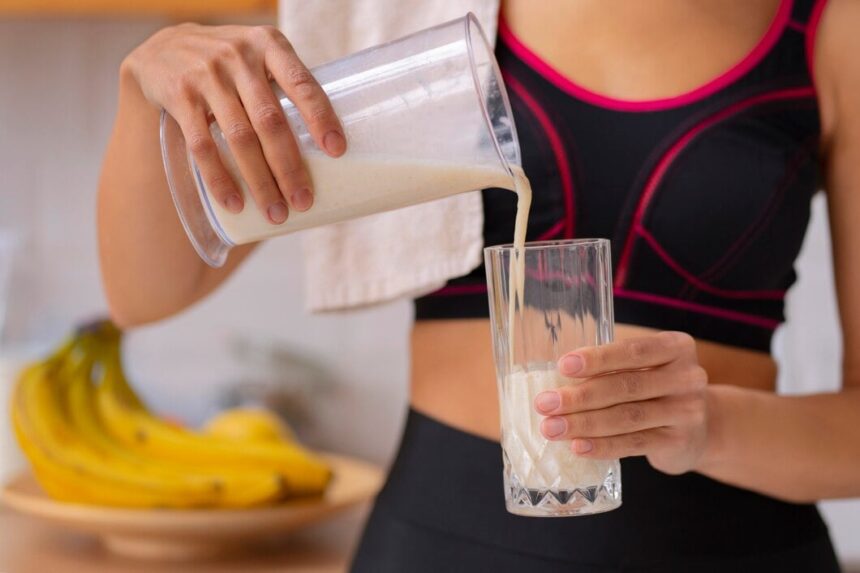The sports nutrition industry is a multi-billion dollar powerhouse, fueled by athletes’ relentless pursuit of peak performance. From protein powders to pre-workout concoctions, the shelves are overflowing with supplements promising to unlock that extra edge. But amidst the flashy marketing campaigns, one ingredient often takes a back seat – curd whey.
Curd whey, the liquid leftover after milk curdles during cheese production, might sound unappetizing at first glance. However, don’t be deceived by its modest beginnings. Curd whey is a treasure trove of nutrients, particularly protein, and is quietly making waves in the sports nutrition industry.
Why Curd Whey is a Game Changer
Athletes constantly push their bodies to the limit. This intense training breaks down muscle tissue, and protein plays a crucial role in repair and rebuilding. Here’s where curd whey shines:
A Protein Powerhouse: Curd whey boasts a complete amino acid profile, containing all the essential building blocks needed for muscle growth and repair. Studies published in the Journal of the International Society of Sports Nutrition have shown that curd whey protein consumption can significantly improve muscle protein synthesis, especially after exercise.
Fast-Digesting Goodness: Unlike some protein sources like meat, curd whey is readily absorbed by the body. This makes it an ideal post-workout choice, as it quickly delivers essential amino acids to your muscles when they’re most receptive to repair.
Hydration Hero: Curd whey also contains lactose, a natural sugar that serves as an electrolyte. This can be beneficial for athletes who sweat heavily during training, as it helps replenish fluids and electrolytes lost through sweat.
Budget-Friendly Boost: Compared to other popular protein sources like whey protein isolate, curd whey is a more affordable option. This makes it an attractive choice for athletes who are budget-conscious but still prioritize optimal protein intake.
Curd Whey vs. Whey Protein Isolate: A Tale of Two Powders
Whey protein isolate has long been the reigning champion of the sports nutrition industry. But curd whey offers a compelling alternative. Let’s break down the key differences:
| Feature | Curd Whey | Whey Protein Isolate |
| Protein Content | Lower (60-80%) | Higher (90%+) |
| Lactose Content | Present | Minimal or absent |
| Fat Content | Low | Minimal or absent |
| Cost | Lower | Higher |
The higher protein content of whey protein isolate might seem like an obvious advantage. However, the presence of lactose in curd whey can actually be beneficial. Lactose can help with protein absorption and may also contribute to gut health, which is increasingly being recognized as a vital component of overall athlete well-being.
Curd Whey: More Than Just Protein
While protein is the star of the show, curd whey also contains other beneficial nutrients:
Immunoglobulins: These are proteins that support the immune system, potentially aiding athletes in fending off illness and staying healthy during periods of intense training.
Minerals: Curd whey is a natural source of minerals like calcium and potassium, which are essential for bone health and muscle function.
Is Curd Whey the Next Big Thing?
The sports nutrition industry is constantly evolving. While more research is needed to fully understand the long-term benefits of curd whey for athletes, the initial results are promising. Its affordability, complete amino acid profile, and potential gut health benefits make it a strong contender in the protein supplement arena.
However, there are some limitations to consider. The presence of lactose can cause digestive issues in individuals with lactose intolerance. Additionally, curd whey may not be as palatable on its own compared to flavored protein powder types.
The Curd Whey Verdict: A Promising Player
Curd whey may not be the flashiest supplement on the market, but its potential benefits for athletes are undeniable. It offers a cost-effective way to boost protein intake, promote muscle recovery, and potentially even support overall health. Whether curd whey becomes the next big thing in the sports nutrition industry remains to be seen. But one thing is certain – it’s no longer just the leftover from cheese production. It’s a rising star with the potential to shake up the protein supplement game.







